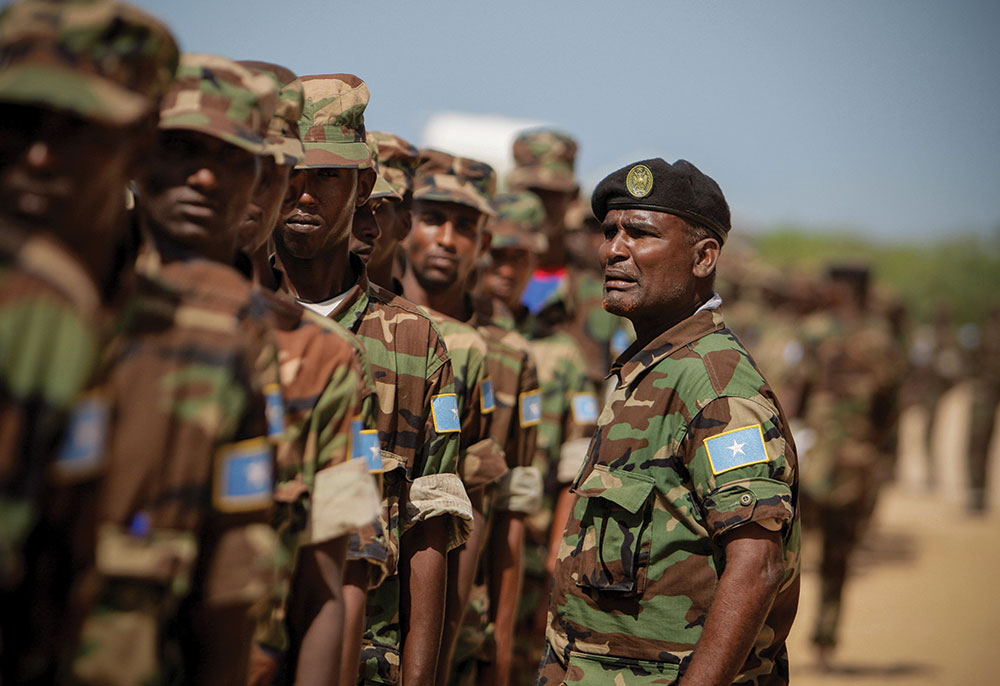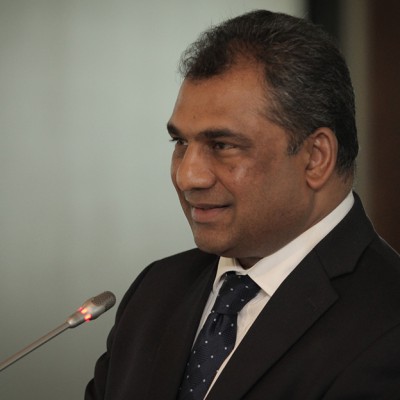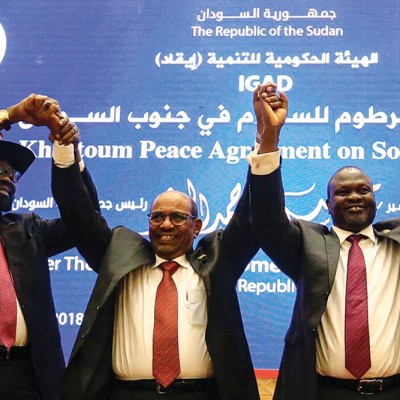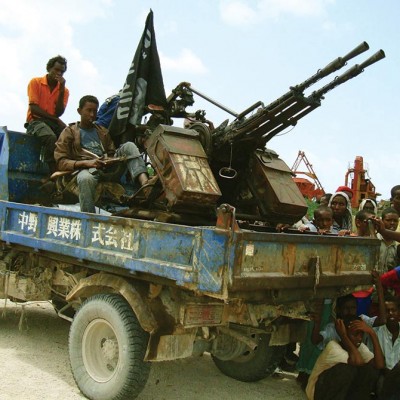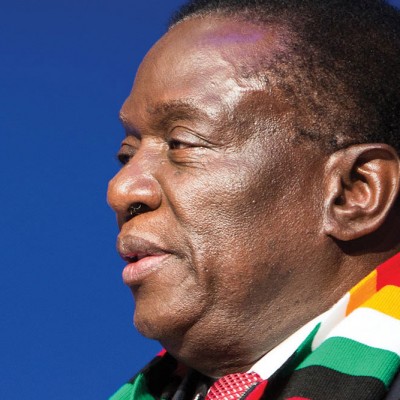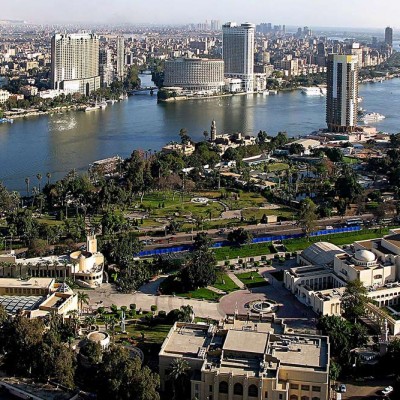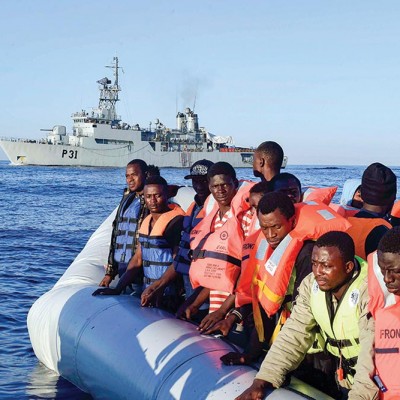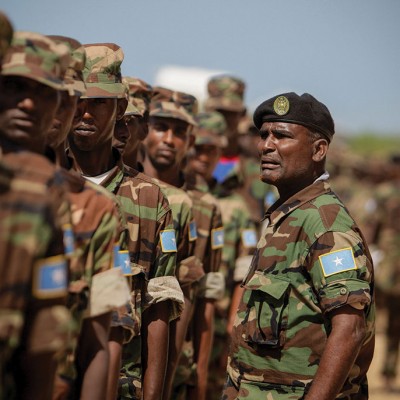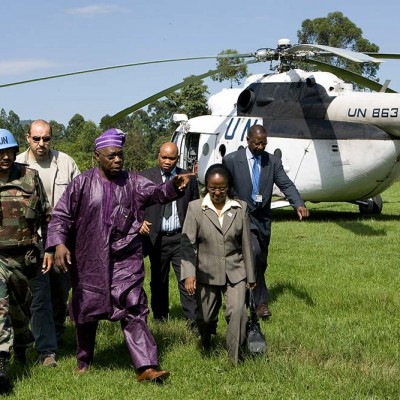Introduction
There are currently a number of debates among scholars and researchers in social sciences, particularly those whose research work is on the issues of war and peace. These debates are around the notion of “new” and “old” wars, and were sparked by scholars such as Kaldor, who argued that new wars are significantly distinct from old wars in many ways. In her writing, she described new wars as “a mixture of war, organized crime and massive violations of human rights in which actors are both global and local, public and private. These wars are fought for particularistic political goals using tactics of terror and destabilization that are theoretically outlawed by the rules of modern warfare.”1 Following this argument, this article presents a similar view: that new wars are distinct from old wars.
In describing old wars, Kaldor explains that they were fought by regular armed forces of states, and were financed by the respective states. To a greater extent, these wars were fought within the dictates of international humanitarian law (IHL) or the law of armed conflict (LOAC).
This article advances this idea by adding terrorism as one dimension of new wars. It discusses terrorism as a phenomenon of new wars, and narrows down this discussion to modern terrorism activities perpetrated by the Boko Haram and al-Shabaab terrorist groups. Such activities are principally a manifestation of new wars on the African continent.
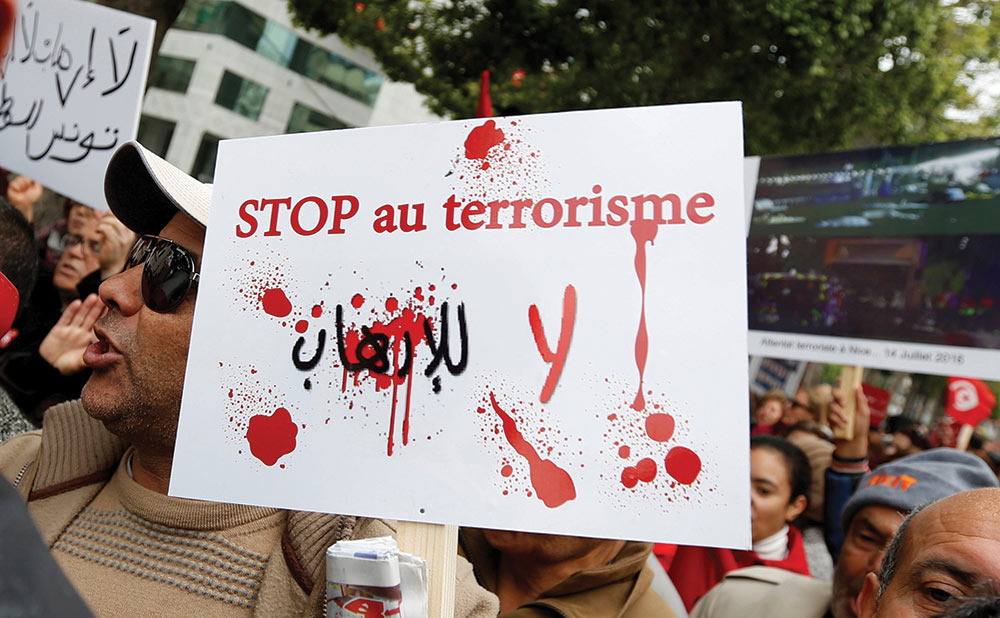
In the aftermath of the 11 September 2001 terrorist attacks in the United States (US), terrorism has increasingly become a new tactic of warfare and a key security threat, both in Africa and globally.2 Terrorism is in itself an evolving global issue, and is among the most complicated and demanding security challenges for the international community. On the African continent, for instance, terrorism has continued to affect people’s fundamental human rights both directly and indirectly, including contributing to high numbers of people being forcibly displaced from their residences or countries. As a consequence, terrorism has remained a high priority for the international community, including security actors, with regard to comprehensive counterterrorism strategies. Currently, Africa – particularly the eastern, northern and western regions – has witnessed a rapidly growing trend of terrorist activities.3 This growth is demonstrated not only by the number of terrorist attacks, but also by the number of countries affected by them.4
The following section provides a brief description of Africa’s most prominent terrorist groups under study – Nigeria’s Boko Haram and Somalia’s al-Shabaab.
Africa’s Prominent Terrorist Groups
There is no definite number of terrorist groups in Africa. This is because terrorism is an evolving notion being perpetuated by myriad actors across the continent. However, the number of terrorist attacks being witnessed around the continent are well documented in literature and the media. According to the 2017 Global Terrorism Database (GTD) of the University of Maryland, a terrorist attack is defined as “the threatened or actual use of illegal force and violence by a non-state actor to attain a political, economic, religious, or social goal through fear, coercion, or intimidation”.5 The GTD further highlights some elements that should be exhibited to qualify an attack as “terror” in practical terms. These elements include that an event must be intentional in its nature; the event must comprise a certain level of violence or threat, including property violence and violence against people; and the perpetrators of the terrorist attacks must be subnational actors.6
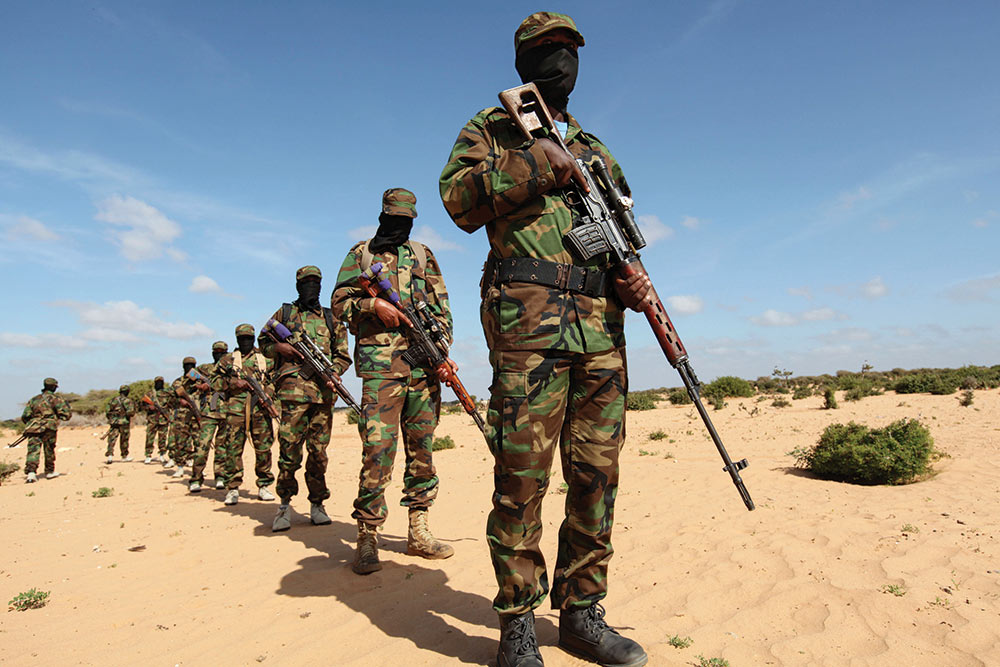
The most prominent terrorist groups that are creating a terror impact in Africa include Boko Haram of Nigeria and al-Shabaab of Somalia. The presence of these terrorist groups, together with their allies across Africa, has led to property damage and huge numbers of people dying and sustaining injuries. In addition, terror activities on the continent have contributed to mass displacements of the civilian population. This growing trend of terrorist attacks, which has resulted in the increased movement of people across borders, remains a major security challenge for policymakers in Africa.7
The lethality of terrorism has increased the presence of the international community, particularly the US, in Africa. Its presence on the continent has not only been seen militarily, but also through counterterrorism-inclined policymaking processes – for example, a US policy based on the Combined Joint Task Force – Horn of Africa (CJTF-HOA), which was established in 2008. Such policies still need critical evaluation to determine their effectiveness in incapacitating the lethality of terrorist groups on the continent. Many questions still remain unanswered, even with the involvement of external actors. Is Africa able to showcase success stories in the fight against the Boko Haram and al-Shabaab terrorist groups? Has the notion and understanding of new wars brought more complexity in countering terrorism on the continent than before?
The Boko Haram Insurgency
The history of the Boko Haram insurgency dates back to 2002, when it was established in Borno State, northern Nigeria as a domestic Islamic religious group. Due to differing religious ideologies in the area, the group resorted to deadly violence as a tactic to oppose non-Islamic ideology and influence the introduction of Sharia law (the holy law that Muslims are expected to adhere to).8 In its quest to achieve this agenda, Boko Haram’s terror events increased and had both a direct and an indirect impact on the civilian population across Nigeria and neighbouring countries. The Armed Conflict Location and Event Data (ACLED) project – which uses media reports to map crises, including those linked to terrorism – highlighted that Boko Haram has carried out more than 3 416 terror events since 2009, leading to more than 36 000 fatalities.9 One of the better-known examples of Boko Haram’s terror tactics was the 2014 abduction of 276 girls from Chibok village in Borno State, Nigeria.10 The event drew the attention of the international community, in particular because the event also demonstrated the gender dimension of terrorist activities in Africa.
Boko Haram has engaged in sophisticated and varied methods of warfare against the government of Nigeria as well as against the civilian population, leading to significant deaths and the mass forced displacement of citizens. A 2016 United Nations High Commissioner for Refugees (UNHCR) and World Bank report indicated that the Boko Haram insurgency has a profound impact on innocent civilians and society.11 The group’s indiscriminate terror activities have been perpetrated against a wide spectrum of targets.

The report further indicates that Boko Haram has been the main reason for forced displacement in the region. The insurgency has displaced over 2 million people, who have either crossed international borders to neighbouring countries or relocated to other safe places within their countries of origin.12 While Boko Haram remains one of the the continent’s largest terrorist groups, its activities are on a downward trend.
The al-Shabaab Insurgency
The al-Shabaab insurgency in Africa has also been at the centre of public discussions, and has led to a call for increasingly comprehensive national and international counterterrorism responses. The group has also significantly contributed to instability on the continent and further polarised an already fragmented Somali society. Somalia’s al-Shabaab and its Islamic extremism can be traced back to the mid-1970s, when the group began as an underground movement opposing the repressive and corrupt regime of Siad Barre. This rebellion was coupled with the Barre regime’s failure to resolve economic challenges that Somalis who were living outside the colonial borders faced. The US Department of State has noted that since its establishment, the al-Shabaab terrorist group has remained a notorious group and poses a serious security threat in Africa, having successfully regained territory in Somali’s southern and central regions.13 Although al-Shabaab predominantly controls most rural parts of south and central Somalia, the group’s military influence has been felt throughout the country through fear and intimidation tactics.
Armed conflict between al-Shabaab and the Somali army – including associated human rights violations – has resulted in massive civilian displacements, both within and outside Somalia. According to the UNHCR Global Trends Report 2018, the number of people who have faced forcible displacement at the end of 2017 increased to slightly over 68 million.14 The protracted crisis perpetrated by al-Shabaab in Somalia remains among the top crises contributing to massive forced displacements in Africa. The UNHCR report further indicates that Somalia has the fifth position globally as both a refugee- and internally displaced person (IDP)-producing country.

The significant numbers of displaced people have been attributed to the notion of new terrorism, as observed by Spencer,15 who argues that there has been a shift from old to new terrorism in the past few decades. He points out some of the notable features of new terrorism: first, the prominence of religious ideologies shaping terrorism, and second, that terrorist groups tend to engage in excessive indiscriminate violence against their opponents. These features of new terrorism, to a great extent, link with Kaldor’s observation that new wars violate human rights indiscriminately.16 These observations demonstrate in practical terms the realities of both al-Shabaab and Boko Haram, which are both religious organisations and are fighting for a related cause. In addition, their terror attacks are indiscriminate in nature and aim to produce the maximum possible impact in terms of destruction and casualties. Currently, al-Shabaab’s terror capacity is also weakening, according to a United Nations report.17 However, the group remains a serious security threat on the continent, as evidenced in the recent January 2019 attack on the DusitD2 hotel and office compound in Nairobi, Kenya.
Features of New Wars in Relation to Terrorism
Although the Cold War ended with the introduction of waves of democratisation in many contexts, it also ended with the start of what are believed to be new forms of wars. What still remains unclear are the features of new wars, which are embedded in the terror activities of Boko Haram and al-Shabaab. What then are the features of new wars that are relevant to terrorism as a manifestation of new wars, in relation to the two terrorist groups under scrutiny? Do the terror activities perpetuated by Boko Haram and al-Shabaab clearly exhibit features of new wars?
According to Kaldor’s 2013 article, In Defence of New Wars,18 “old wars were fought by the regular armed forces of States whereas new wars are fought by varying combinations of networks of State and non-State actors – regular armed forces, private security contractors, mercenaries, jihadists, warlords, paramilitaries, etc.” In addition, new wars constitute a fundamental purpose from which they are fuelled, and these could be one or all of the following: religious ideologies, imbalance in the sharing of resources, financial gains, control of political power or territory, and many others. In relation to earlier or old wars, new wars constitute unique methods of warfare in that the attacks are usually disproportionate in nature, contradicting the LOAC. After an attack has been launched, the perpetrator may not be known – only an allegation of who could have committed the act may exist.
Many of the terror activities of both Boko Haram and al-Shabaab fall within the definition of new wars, meaning that terrorism is a manifestation of new wars. Both Boko Haram and al-Shabaab wage wars by use of disproportionate attacks, usually not directed on their rivals but most often on the innocent civilian population or civilian objects. An example of this would be Boko Haram’s infamous attacks on schools, and their eventual capture of the Chibok school girls. Another feature of new wars that closely relates to terrorism is the method of financing wars. Unlike old wars, which were financed by states through taxes, new wars are financed privately by unknown individuals or entity financers. Both Boko Haram and al-Shabaab are privately financed, with huge donations from sympathisers.
Such funding enables both groups to boast publicly of their sophisticated weapons purchased and used in attacks.
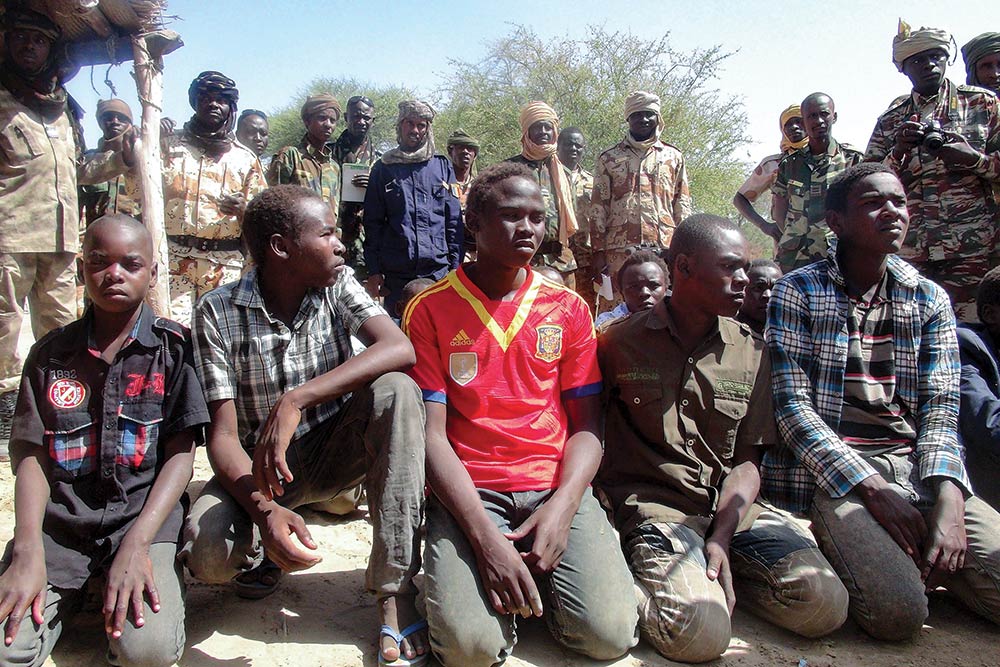
The mass displacement of the civilian population is another feature of new wars, and is embedded in the terror activities perpetrated by these two groups. In old wars, the targets were rival armies and military objectives. However, new wars have been characterised by population displacement as civilians, including women and children, are the targets of terror groups. As a consequence, the world continues to see huge numbers of people being displaced and seeking safety either within or outside the borders of their countries. As an example, the Boko Haram insurgency accounts for approximately 70% of the total civilian population being displaced in the countries of the Lake Chad region.19 Al-Shabaab has also contributed to the great numbers of both refugees and IDPs resulting from its insurgency in Somalia.
Displaced people are usually vulnerable to being targeted as recruits for terrorist groups. There are numerous reasons why people, especially the youth, join extremist groups such as Boko Haram and al-Shabaab. This point highlights yet another feature of new wars, which is that terror activities are often youth-led in many terrorist groups. Young people join these organisations for economic gains, as most African young people suffer from a scarcity of employment opportunities. This links well with the reality in both the Boko Haram and al-Shabaab terrorist groups, whose activities have been largely sustained by young people, including young women, joining as extremists due to circumstances of poverty, insecurity, injustice, and so on. Both Boko Haram and al-Shabaab continue to use these circumstances and related poor economic contexts to their advantage by identifying and providing the youth with alternative opportunities to compel them to join these terrorist groups.
In the past few years, the world has seen an increased proliferation of religious-based terrorist groups that are motivated by extremist religious ideology. This extremist religious ideology is in itself another feature of new wars. As an example, both Boko Haram and al-Shabaab are religious-based terrorist organisations whose agenda seeks the popularisation of Islamic beliefs in Nigeria and Somalia respectively. Ideology, particularly religious ideology, also serves as another factor or breeding ground for the recruitment of people into terrorist groups. Therefore, individuals who have strong beliefs in a similar ideology to that of terrorist groups are vulnerable and easily recruited into these organisations.
Another feature of new wars that is closely related to terrorism is the use of technology and the internet, particularly social media platforms such as Facebook, Twitter and other forms. For both Boko Haram and al-Shabaab, the use of internet or social media has been instrumental in achieving their objectives, and is useful for reaching out to young people, particularly during recruitment exercises. The internet has also been used by terrorist groups as a communication and coordination tool during attacks, as well as being used to raise operational finances. Overall, the internet has significantly accelerated and changed the way wars have been fought, particularly in terms of the operation of terrorist groups and the methods for showcasing the impact that terrorist groups have.
Conclusion
The changing nature of wars is evident through their massive impact on humanity, the environment and infrastructure, leading to the assertion that there has been a shift from old wars to new wars. This article argued in proposition of this assertion. It discussed terrorism as a manifestation of new wars on the African continent and cited two of Africa’s prominent terrorist groups, Nigeria’s Boko Haram and Somalia’s al-Shabaab. The article discussed some of the features of new wars that are relevant to the terrorism activities perpetrated by these two groups. Further, it demonstrated the contribution of these groups to deaths and the mass displacement of innocent civilians on the continent as a characteristic of new wars. These significant numbers of displaced civilians illustrate the dire need for comprehensive counterterrorism approaches in Africa. Due to the complexity and lethality of terrorism in Africa, there is a need to reconsider new strategies for conflict resolution, such as human security-based approaches, which are prerequisite for effective counterterrorism measures.
Endnotes
- Kaldor, Mary (2003) New and Old Wars: Organized Violence in a Global Area, 3rd ed. New Jersey: John Wiley and Sons.
- Gberie, Lansana (2016) ‘Terrorism Overshadows Internal Conflicts’, United Nations Africa Renewal, Available at:
<https://www.un.org/africarenewal/magazine/april-2016/terrorism-overshadows-internal-conflicts> [Accessed 27 December 2018]. - Beli, Ruchita (2017) ‘Rise of Terrorism in Africa’, Available at: <https://idsa.in/idsacomments/rise-of-terrorism-in-africa_rberi_130417> [Accessed 15 January 2019].
- Abang, Dominic, Chuku, Chuku and Isip, Ima-Abashi (2017) Growth and Fiscal Consequences of Terrorism in Nigeria. Working Paper Series, No. 284, African Development Bank.
- University of Maryland (2017) ‘Global Terrorism Database Codebook’, Available at: <https://www.start.umd.edu/gtd/downloads/Codebook.pdf> [Accessed 27 October 2018].
- Ibid.
- Cilliers, Jakkie (2003) Terrorism and Africa. African Security Review, 12 (4), pp. 91–103.
- Azama, Sadau (2015) ‘A Critical Analysis of Boko Haram Insurgency’, Master’s thesis, University of Abuja, Available at: <http://www.dtic.mil/dtic/tr/fulltext/u2/1038853.pdf> [Accessed 12 January 2019].
- ACLED (2018) ‘Profile Crisis: Boko Haram’, Available at: <https://www.acleddata.com/dashboard/> [Accessed 28 October 2018].
- Oyewole, Samuel (2016) Rescuing Boko Haram’s Schoolgirl Victims. New Zealand International Review, 41 (1), pp. 25–28.
- UNHCR and World Bank (2016) ‘Forced Displacement by the Boko Haram Conflict in the Lake Chad Region’, Available at: <https://data2.unhcr.org/fr/documents/download/52535> [Accessed 30 December 2018].
- Ibid.
- United States Department of State (2017) ‘Country Reports on Terrorism 2016’, Bureau of Counterterrorism, Available at: <https://www.state.gov/documents/organization/272488.pdf> [Accessed 30 October 2018].
- UNHCR (2017) ‘Global Trends: Forced Displacement in 2017’, Available at: <http://www.unhcr.org/5b27be547.pdf>
[Accessed 30 October 2018]. - Spencer, Alexander (2006) ‘Questioning the Concept of “New Terrorism”’, Available at: <https://www.bradford.ac.uk/social-sciences/peace-conflict-and-development/issue-8/Questioning-the-Concept.pdf> [Accessed 30 December 2018].
- Kaldor, Mary (2003) op. cit.
- Voice of America (2018) ‘UN: Al-Shabaab in Decline, but Still a Threat’, Available at: <https://www.voanews.com/a/al-shabab-in-decline-but-still-threat-united-nations-says/4222544.html> [Accessed 11 March 2018].
- Kaldor, Mary (2013) In Defence of New Wars. Stability, 2 (1), pp. 1–16.
- UNHCR and World Bank (2016) op. cit.

